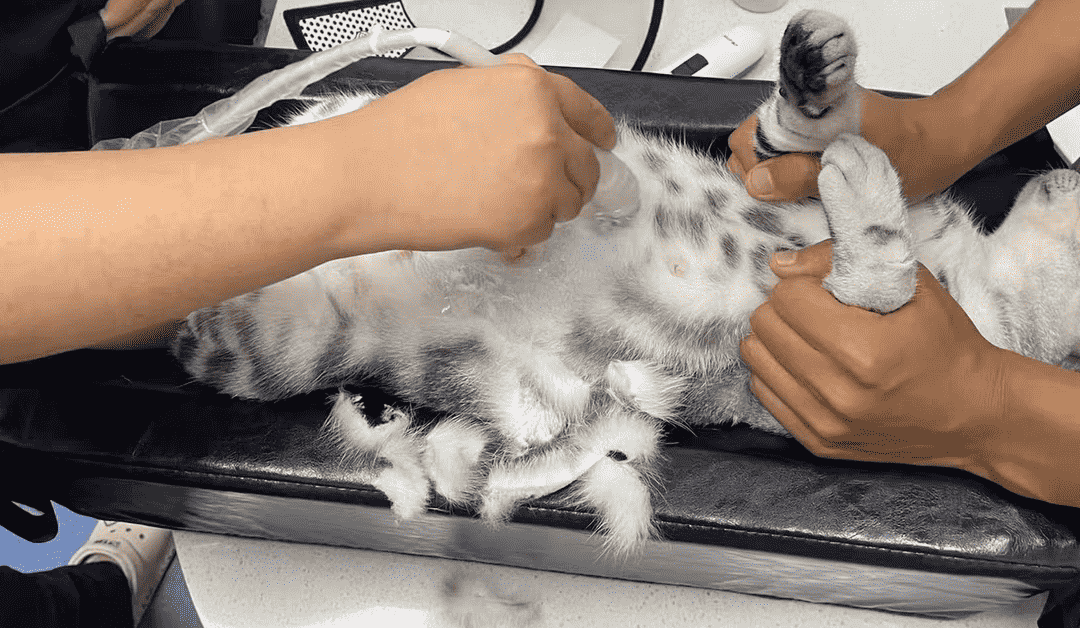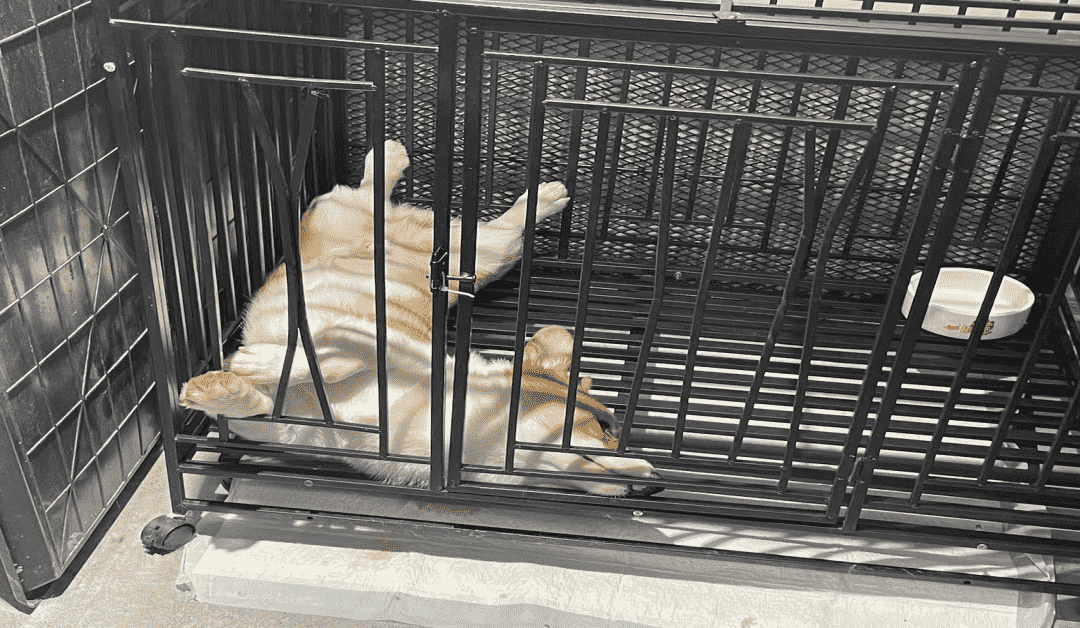
by Dr. Faith Whitehead | Nov 11, 2022 | Research and News
The movement of animals from one place to another is called migration. There are two main types of migration: 1. Seasonal Migration Seasonal migration is the most common type of migration. Animals migrate to find food or to escape harsh weather conditions. For example, some animals migrate to avoid cold winters. 2. Lifelong Migration Lifelong migration is when animals migrate once in their lifetime. This usually happens when animals are looking for a new place to live. For example, some animals migrate to find a new home after their original home has been destroyed.
Migration is a costly endeavor, and animals must carefully weigh the costs and benefits of migrating before undertaking the journey. Depending on the distance traveled and the resources required, migration can be an energetically demanding process that can put animals at risk of injury or even death. Animals often look for a sustainable area with access to many of the resources they require while migrating. While some species avoid returning to the same place, others move back and forth between the same regions. Despite the risks, migration is a vital behavior that allows animals to adapt to changes in their environment and ensure their survival.
Migrating animals may travel in groups or individually. Depending on the species, some animals travel in very large groups while others travel alone or in small groups. The way in which animals migrate can vary based on the resources they need and the geographical features of their migration route. Animals use a variety of methods to migrate. Some animals, such as birds, use the sun and stars to navigate. Others, such as salmon, use the Earth’s magnetic field. Some animals, such as caribou, follow specific trails. Others, such as eels, travel along ocean currents.
The lifespan of the animal may be used as a general guide when considering where animals migrate. In contrast to animals with shorter lifespans, which often move on to new areas throughout time, those with longer lifespans frequently return to their original location. This is due to several factors, such as the fact that animals with longer lifespans usually possess a better understanding of their environment and a more secure food supply. Additionally, these animals are often more resistant to disease and predation, which allows them to remain in their original location for a longer period of time. Furthermore, with shorter lifespans may not live long enough to remember where they came from, while those with longer lifespans may have a better memory and be able to find their way back to their original location. The specific migratory patterns of individual animals may vary depending on a number of factors, including the season, the availability of food, and changes in the environment.
Animals with a lifespan of less than one year, such as certain fish or amphibians, typically migrate to new locations as adults in order to find appropriate breeding sites. In contrast, animals with a lifespan of one to ten years, such as many birds or reptiles, typically migrate back to their birthplace. The distance that animals migrate may also be used as a guide when considering where animals migrate. Animals that migrate long distances are more likely to be searching for food or new territory, while those that migrate shorter distances are more likely to be moving in response to changes in the environment, such as the availability of water or shelter.

by Dr. Faith Whitehead | Nov 11, 2022 | Pet Story, Research and News
People are rearing pets now more than ever before. Few individuals may be seen walking dogs if you take a stroll through a park or even just walk through the streets. In reality, a lot of locations now accept pets, and several locations have pet cafés available. People want pets for different reasons. Some people want to keep them as loyal friends and companions, some people want to keep them for their beauty, and some people keep them for their unusual and unique traits. People have been keeping pets for a long time. The first known dogs were domesticated over 14,000 years ago. Since then, people have continued to keep all kinds of animals as their own, including dogs, cats, birds, rabbits, hamsters, fish, and more. People are becoming more and more interested in keeping pets. In fact, the pet industry is growing. In the United States, the pet industry is a $72 billion industry. This industry is expected to continue to grow. Some people are choosing to adopt pets from shelters instead of buying them from breeders or pet stores.
In the United States alone, almost 25 million animals are used for experimentation every year. Dogs, cats, bunnies, pigs, lambs, monkeys, and other creatures are among them. They are confined to small cages where they are force-fed chemicals, have holes drilled into their skulls, and suffer other painful procedures. The lucky ones are euthanized when their torment is over. Many others, however, are abandoned and often die because they are ill and have no way to care for themselves. There is no law that requires laboratories to find homes for the animals they no longer need, so the fate of these creatures is often left to the discretion of individual scientists. As a result, many animals used in experiments are simply killed when the research is done. There are a number of animal rights organizations, such as People for the Ethical Treatment of Animals (PETA), that work to expose the cruelty of animal testing and lobby for stricter regulations. These groups also provide support to scientists who want to find alternatives to using animals in their research.
Animal experimentation is sometimes referred to as “animal testing,” “animal experimentation,” and “animal research.” It is used to evaluate a product’s safety and effectiveness as well as to comprehend how the human body functions. There are three types of animal experiments: In-vitro experiments are conducted using cells or tissues that have been removed from the body. In-vivo experiments are conducted using living animals. In silico experiments are conducted using computer models. Animal experimentation is considered to be a necessary evil by some people while others believe that it is an inhumane and cruel practice. The debate surrounding the ethics of animal experimentation is complex and often emotional. Those who support animal experimentation do so for a variety of reasons. They argue that animal experimentation is necessary for the advancement of medical science and that it has led to the development of lifesaving treatments and vaccines. They also argue that the animals used in experiments are well cared for and that their rights are protected by law. Those who oppose animal experimentation do so for a variety of reasons. They argue that it is cruel and inhumane to use animals for experimentation. They also argue that there are alternative methods of research that do not involve the use of animals.
The testing industry often subjects animals to tests that are on the verge of becoming torture. Animals are often bred particularly to be experimented on. The tests performed on animals are often painful and sometimes deadly. Animals experience fear and suffering during experiments. Animals are not able to give consent to be experimented on. Test subjects may be forced to become addicted to drugs, or be exposed to HIV or other deadly diseases. In addition to the ethical problems associated with animal testing, there are also scientific problems. Animals react differently to drugs and other substances than humans do. This means that the results of animal testing may not be accurate when applied to humans.
About the author: Dr. Faith Whitehead; is a licensed veterinarian and researcher.

by Dr. Faith Whitehead | Nov 11, 2022 | pet Chinese herbal medicine
Human beings abuse animals held in zoos, aquariums, and circuses. They will act flawlessly for the public while suffering from illness, agony, malnutrition, and dread. The majestic creatures are forced to perform ridiculous tricks that are the furthest thing from their natural behavior. The haunting screams of the animals can be heard throughout the arenas. With every flip, they pray that their trainer will get the message that they are in pain and make it stop. The animals are confined to tiny, dirty cages, and are not given the proper care that they need. There are many ways in which humans abuse animals in zoos, aquariums, and circuses. The most common form of abuse is through neglect. The animals are not given the proper food, water, or shelter that they need to survive. They are also not given the opportunity to exercise or socialize with other animals. This can lead to mental and physical health problems for the animals. Another way that humans abuse animals in zoos, aquariums, and circuses is through physical abuse. The animals are often beaten in order to make them perform tricks. They are also often forced to perform in ways that are uncomfortable or dangerous. This can lead to injuries or even death for the animals. Finally, humans also abuse animals in zoos, aquariums, and circuses through sexual abuse. The animals are often forced to mate with other animals or with humans.
Pets are usually always deprived of their natural behavior and compelled by their owners to do meaningless stunts and performances. Zookeepers, aquarium keepers, and circus performers take animals from their homes and out of their natural environment. As a result of the emotional and physical abuse they endure in their captivity, these animals often do not live to their full potential. They are confined to small areas and have no room to roam around or exercise. This can cause severe health problems, and the animals are often not given proper medical care. They are also deprived of their natural diet and are instead fed unhealthy and sometimes poisonous food. The food they eat is often not nutritious and is sometimes laced with drugs to keep them docile. Pets are also sometimes given hormonal injections to make them grow faster or to keep them from getting pregnant. Pets are also often forced to live in unsanitary conditions. They are kept in cages that are too small for them and are not given enough space to move around. This can lead to health problems and can even cause death.
Because their natural nature interferes with the entertainment they are designed to present, performing animals are often given different medications by injection. Animals shouldn’t be treated so poorly and neglected and shouldn’t be kept in tanks, cages, or shows. Zoos, aquariums, and circuses are not appropriate for public usage. Animals should be allowed to roam freely, not be confined in cages or tanks. Most of these animals are brought from the wild and are forced to live in poor conditions. For example, elephants in the circus are chained up for most of their lives and are only let out to perform tricks that are often painful.

by Dr. Faith Whitehead | Nov 11, 2022 | Pet Story, Research and News
Pets are the best friends for children. They love children and enjoy their company. Pets provide children with companionship, love and security. They teach children how to love and care for others. Children who have pets are more likely to be happy and have higher self-esteem. They are also less likely to suffer from anxiety and depression. Some of the advantages of children connection to pets essay are that they help children develop empathy, they can provide companionship, they can help children learn responsibility, and they can help children feel loved and secure. Pets can help children develop empathy by teaching them to care for another living creature. Pets can provide companionship by being a constant friend to a child. Pets can help children learn responsibility by teaching them to care for another living creature. Pets can help children feel loved and secure by providing them with a loyal and loving companion.
The relationship between children and pets is a long and varied one. Pets provide company and absolute love for children, who in turn often provide care and attention for their furry (or sometimes scaly) friends. This symbiotic relationship can offer many benefits for both parties, including increased physical activity, decreased loneliness and anxiety, and improved social skills. Pets can also teach children about the cycle of life and how to deal with the death of a loved one. They can also inspire empathy and responsibility in children, who must learn to take care of their pets in order to keep them healthy and happy. There are, of course, some risks associated with keeping pets, including the potential for bites or scratches, allergies, and the spread of disease. However, these risks can be minimized by choosing the right pet for your family and teaching children how to safely interact with their new furry (or scaly) friend.
Many people believe that the idea of exposing children to pets is a controversial one. Some people believe that it is beneficial for children to be exposed to pets, as it can teach them responsibility, empathy, and other important life skills. Others believe that pets can be dangerous for children, and that children should not be left alone with them. Ultimately, the decision of whether or not to expose children to pets is a personal one. Some children may form strong bonds with their pets and view them as part of their social circle, while others may not be as attached and view them more as property. Ultimately, it is up to the individual child and how they choose to interact with their pet that will determine if and how their social life is affected. For some children, having a pet can provide them with a sense of companionship and responsibility. These children may feel more comfortable socializing with other children who also have pets, as they have something in common to bond over. For other children, having a pet may foster a sense of independence, as they learn to care for another living creature. These children may be more likely to engage in activities on their own, such as exploring the outdoors, and may not feel the need to be around others as often.
About the author: Dr. Faith Whitehead; is a licensed veterinarian and researcher.

by Dr. Faith Whitehead | Nov 11, 2022 | Dog Cancer & Tumors
There are both advantages and disadvantages to dog tumor surgery. The main advantage is that it can remove the tumor and potentially cure the cancer. The main disadvantage is that it is an invasive procedure with potential risks and complications. There is also a risk that the cancer will recur after surgery. Some vets recommend surgery before the standard six cycles of chemotherapy, whereas others recommend three cycles, surgery and then three more cycles. Surgery may be the first step if the tumor is causing pain or physical issues, such as a bowel obstruction, or the vet is unsure whether cancer is causing the problems. The most common reconstructive processes are tumor separation, laceration repair, maxillofacial operation, defect revision, side surgery and chest reduction plasty.
There are many advantages to dog tumor surgery. The most obvious advantage is that the tumor will be removed and the dog will be cured. In addition, the surgery will also remove any cancerous cells that may have spread to other parts of the body. This can significantly improve the dog’s prognosis and quality of life. Another advantage of dog tumor surgery is that it can be used to diagnose the tumor. This is important because it can help to determine the best course of treatment. It can also help to rule out other possible causes of the dog’s symptoms. Dog tumor surgery is also relatively safe. Complications are rare and usually minor. The vast majority of dogs recover quickly and without any problems. This type of surgery is usually very successful and has a high success rate.
Dog tumor surgery is a major surgery that carries many risks and disadvantages. The most common complications associated with dog tumor surgery are bleeding, infection, and pain. Bleeding can occur during the surgery and may require a transfusion. Infection is a risk with any surgery, but is particularly a concern with dog tumor surgery due to the proximity of the tumor to vital organs. Pain is also a common complication, and dogs may require pain medication for several weeks after surgery. Another concern with dog tumor surgery is the potential for the tumor to recur. This is a particular concern with tumors that are not completely removed or that are located in difficult-to-reach areas. If the tumor does recur, another surgery may be needed. The cost of dog tumor surgery can also be a disadvantage. The surgery itself is expensive, and there are also often additional costs for pre-operative testing, post-operative care, and possible complications. This can make dog tumor surgery a financial burden for many families. Finally, the decision to undergo dog tumor surgery is a difficult one. The risks and disadvantages must be weighed against the potential benefits of the surgery. In some cases, the risks may outweigh the benefits, and dog tumor surgery may not be the best.
The chances of cancer recurring after a dog tumor surgery depend on the type of cancer, the stage of the cancer, and the overall health of the dog. For example, in some cases, the cancer may be completely removed, and the dog will have a low chance of recurrence. However, in other cases, cancer may return even after the tumor is removed. The type of cancer and the stage of the cancer at the time of surgery are the two biggest factors that affect the chances of the cancer recurring. Certain types of cancer are more likely to return than others. For example, cancers that affect the blood or lymph system are more likely to recur than other types of cancer. Cancers that have spread to other parts of the body at the time of surgery are also more likely to recur. The overall health of the dog also affects the chances of cancer recurring. Dogs that are in good health are less likely to develop cancer than dogs that are not in good health.
About the author: Dr. Faith Whitehead; is a licensed veterinarian and researcher.






